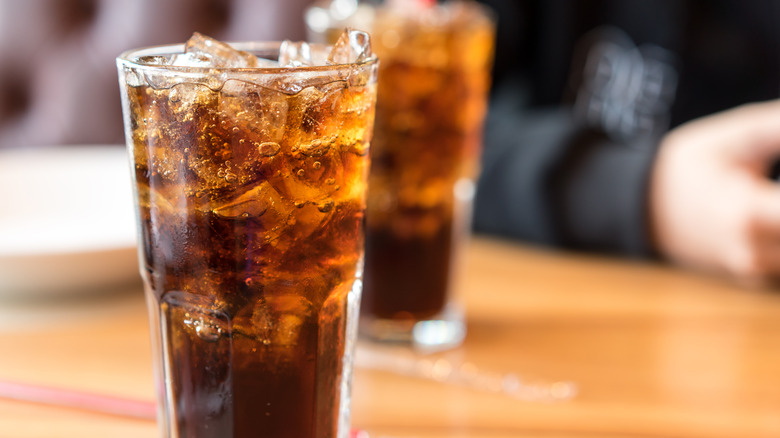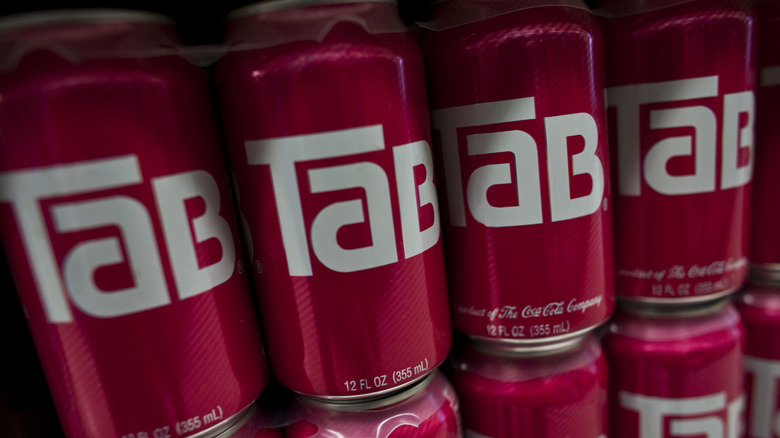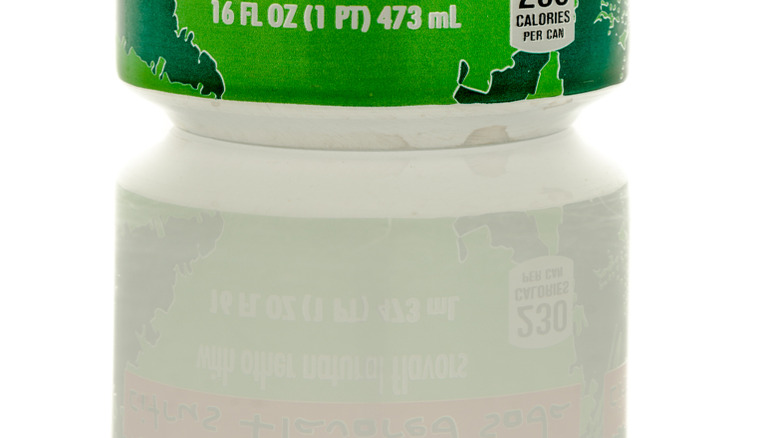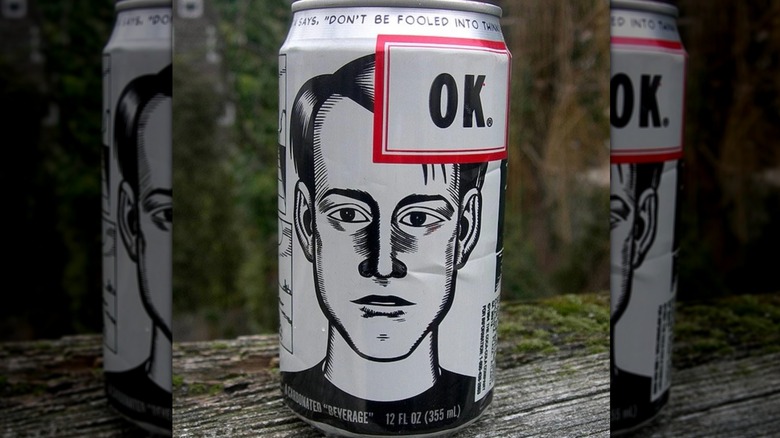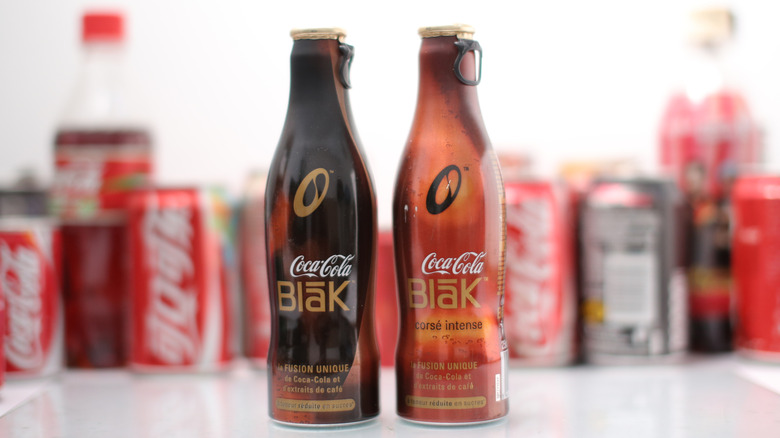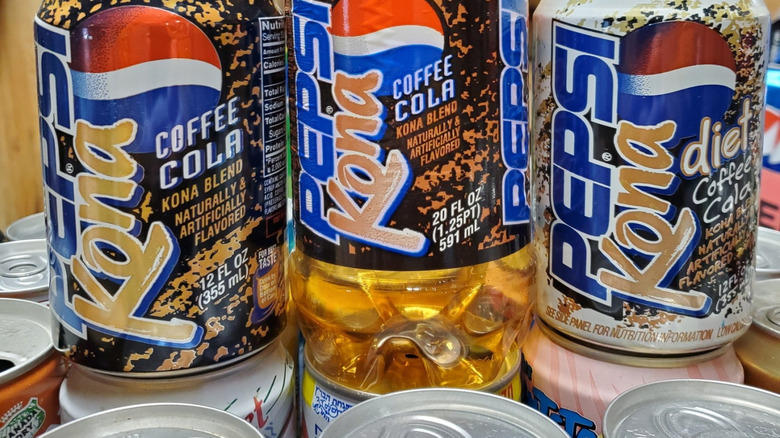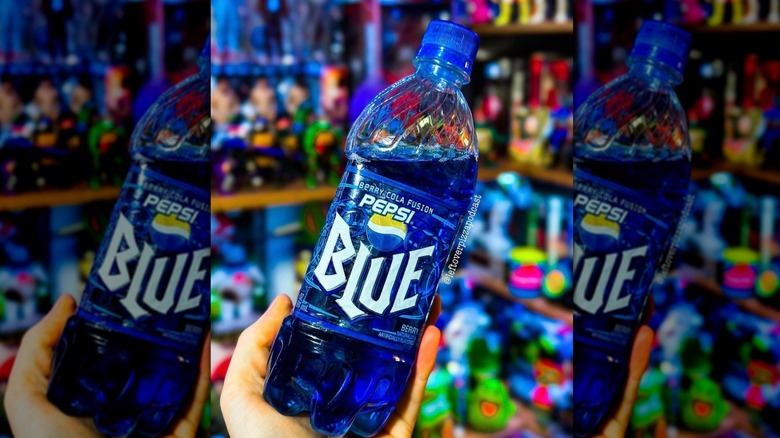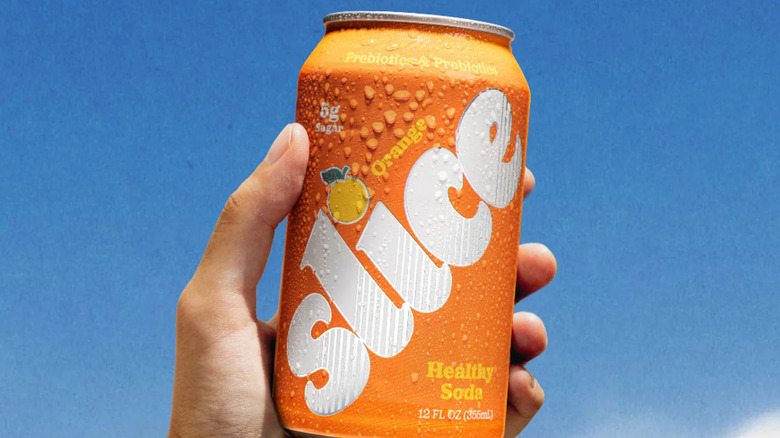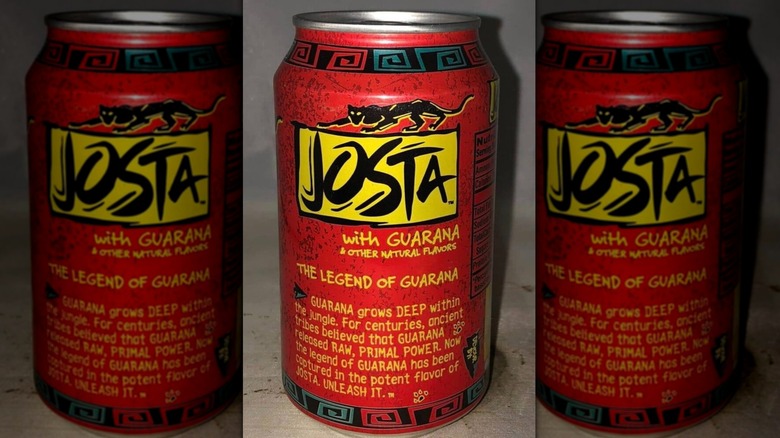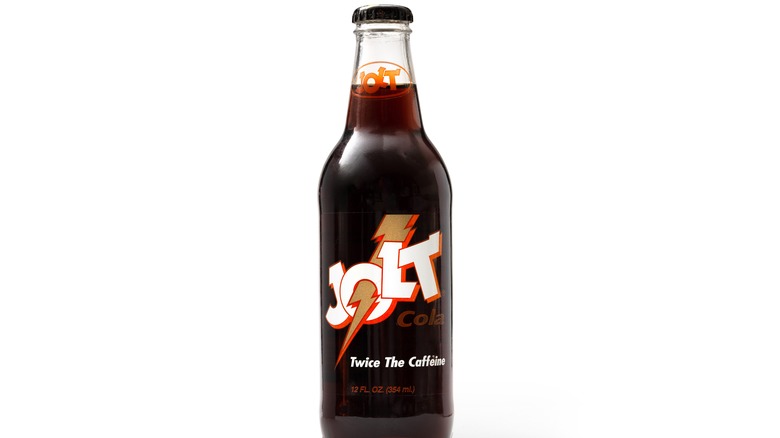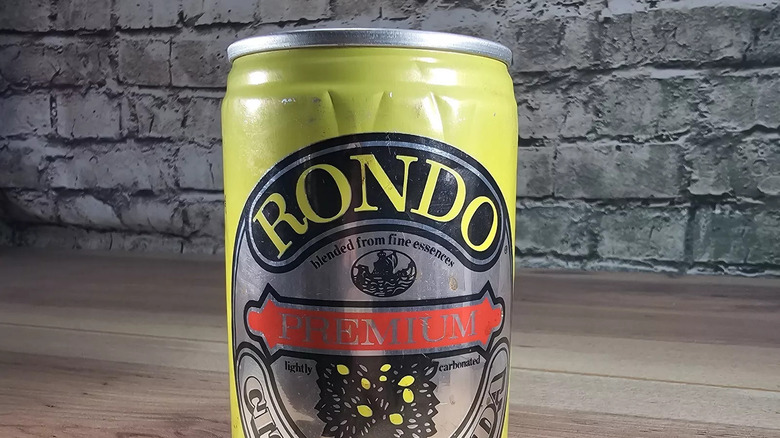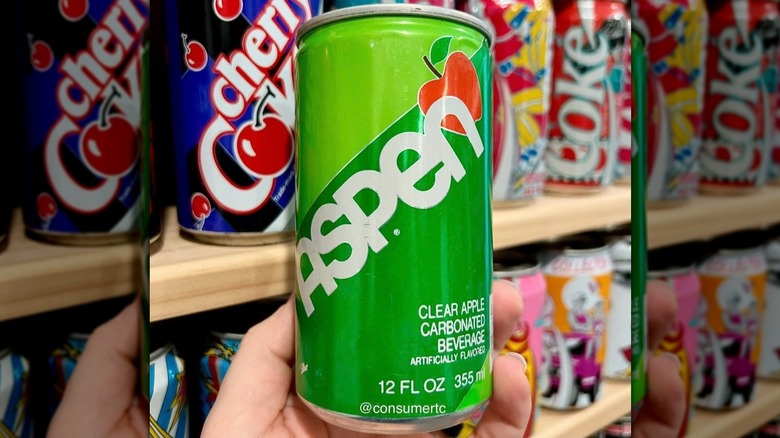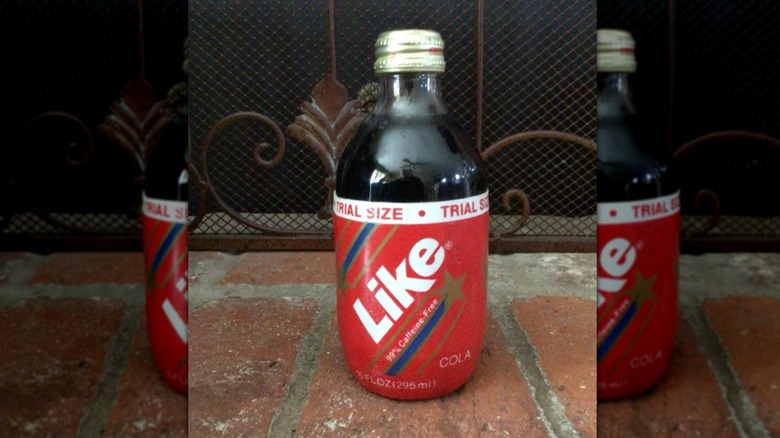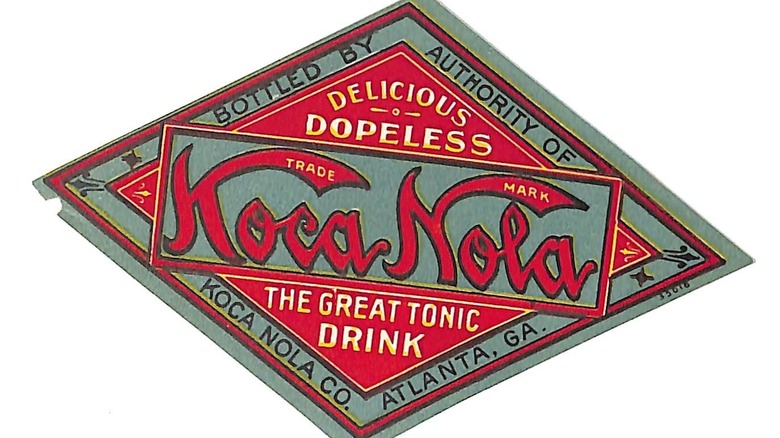Old-School Sodas That Time Forgot
We may receive a commission on purchases made from links.
Coca-Cola, Pepsi, and Sprite may dominate the soda market today, but these brands were not always the clear-cut victors they are now. There were quite a lot of sodas that rose and fell in the ongoing tournament for soft-drink supremacy. Some were well-loved, and others were marketing disasters. Even the big-names like Coke and Pepsi tried their hand at different brands to branch out, capture untapped demographics, or tank competitors' sales with a copycat product.
Marketing for soda has been all over the place — these companies have tried awfully hard to sell cans of sugary water and syrup, advertising lifestyles ranging from ranch work to punk gaming, family outings, and beach partying. Who knew all you needed to bond with your child was a frosty-cool bottle of cola in the backyard? Soda's history is rich with bloodthirsty business tactics, advertising schemes, caffeine scares, and experimental flavoring. The sodas you love are unforgettable, but that's mainly because their pop culture presence won't allow you to forget. Here is a list of old-school sodas that may have escaped memory. You probably shouldn't go drinking from collectible old cans of vintage soda, but you can at least remember some of these unique flavors that enjoyed their time in the sun.
TaB
Anyone remember TaB? Coca-Cola's strange marketing gambit of capitalizing the "B" at the end might have irked grammarians, but citrus soda lovers were still sad to see TaB go the way of the buffalo. This was actually one of the earliest low-calorie sodas ever invented, showing up in good old 1963. And during the 1970s and 1980s, TaB was the No. 1 diet beverage in the entire United States. That's a pretty incredible claim to fame, although to be fair, the soda market was less competitive then compared to now.
Of course, once Diet Coke hit the scene in 1982, that all changed. In an effort to compete with Diet Pepsi, Coca-Cola wanted its own cola-flavored diet drink. Eventually, more marketing money was funneled into Diet Coke, and in October of 2020, Coca-Cola pulled the plug on poor TaB, consigning it to the dustbin of soda history in order to pay more attention to a smaller number of its brands. Adios, TaB — we'll never forget your pioneering low-calorie citrus splendor.
Surge
Another Coca-Cola experiment gone wrong, Surge was a sweet green cocktail with more attitude than comparable beverages like Mountain Dew and Vault. One of its marketing slogans was "Feed the Rush," which recommendation would follow advertisements like the famous one featuring young men shouting and leaping over couches in the street for the honor of chugging (what else?) a bottle of Surge. In the end, the only couch jumpers were those leaping over furniture to escape this ill-fated punk-esque drink.
Surge ended up falling prey to vicious rumors regarding its sugar and caffeine content, and schools began replacing it with healthier options in their vending machines. This was one of the death knells for Surge, whose success depended on access to teenagers in search of a soda with rebellious flair. But this Frankenstein-green canister of human fuel rose from the grave in 2014, and it's actually still available from time to time on Amazon or as part of a special promotion for one fast food joint or another.
OK Soda
This Gen-X soda with an ironic marketing twist might have the most underwhelming label of any drink ever, evoking mediocrity with its famous can-printed images of bored-looking teens staring into the void. Another failed Coca-Cola gambit, OK Soda was a little too true to its name. In 1994, when Coca-Cola invited customers to phone in with their authentic opinions of OK Soda, the reports were not great. The most famous might be one where the caller felt entitled to level a succinct review of, "This stuff tastes like crap."
At least the can was pretty stylish, labeled with quick little quotes pregnant with dry humor such as, "What's the point of OK? Well, what's the point of anything?" Edgy, indeed. Unfortunately, the flavor itself seemed to lack any edge. Some reviews compared the taste to "tree sap" or the kind of mad-science concoction you get when you pour a shot of six different sodas into one cup at a fast food restaurant. By 1994, this drink was not doing OK sales-wise, and distributors had begun pulling it off their shelves.
Coca-Cola Blāk
Coca-Cola decided that the soda market was not enough, evidently, and so Coca-Cola Blāk was invented: A strange combination of coke and coffee that hit the market in 2006 in an attempt to get in on the coffee game, which Starbucks had by then begun supercharging with its famous white-and-green mermaid brand of to-go beverages. This drink was even supposed to froth, kind of like coffee when poured.
What exactly "Blāk" means is anyone's guess, but since the macron (the little line above the "a") typically signals a "long-a" sound, that would mean it's pronounced Coca-Cola "Blake," which sounds like the name of a dude who lives in a bungalow and wears flat-billed orange hats. Most people would probably pronounce it "black," though, which makes a lot more sense in the context of coffee. At any rate, no amount of spelling style was able to save this drink from the brink, and Coca-Cola Blāk was discontinued in 2008 due to poor sales.
Crystal Pepsi
Finally, a tale of Pepsi's failure instead of Coca-Cola's. You have to admit it was a fairly creative idea, though: In 1994, Pepsi decided to market a new, non-caffeinated version of its main drink without the dark coloring that had defined it for so long. Going for some kind of clean-and-pristine vibe, the company called it "Crystal Pepsi." It even played with the concept of synesthesia in its advertising, saying: "You've never seen a taste like this." The flavor was supposed to remain the same as the old Pepsi, allowing customers to enjoy a guilt-free escapade into the realm of delicious soft drinks.
And at first, it worked. Crystal Pepsi's first year saw it scoop up a whopping 1% of all soft drink sales in the U.S. That's a massive number for one single brand variant. It even won the 1992 award for Best New Product. Not to be outdone, old Coca-Cola had to get in there and launch its own copycat drink, "TaB Clear." Both products ended up failing. Crystal Pepsi was dropped in 1993, exemplifying the fickle twists of fate to which brand success can always succumb.
Pepsi Kona
Pepsi's answer to Coca-Cola Blāk was Pepsi Kona, which is pretty much what you'd expect: Pepsi and coffee flavors mixed together. Debuting in 1996, this drink has since become something of a collectible among Pepsi megafans. It contained 44 milligrams of caffeine, compared to the 38 found in normal Pepsi. The most famous ad for Pepsi Kona features a guy in a classic American-style diner asking for a surprise from the waitress behind the counter. In a dazzling display of special effects, the waitress rips off her mask to reveal that she is none other than famous singer Tom Jones, who begins belting out his most famous hit, "It's Not Unusual," while the patron, Bob, enjoys a Pepsi Kona.
It's a memorable ad, but whatever feel Pepsi was going for remains a little confusing. Maybe coffee and Pepsi are supposed to be all-American drinks, and combining them is the quintessential patriotic quaffing experience for Bob? Well if this list teaches you anything, it's that there's nothing more American than discontinuing experimental sodas after a brief but unsuccessful run, and that's just what happened to Pepsi Kona in 2000.
Pepsi Blue
There's an old rhyme, "In 1492, Columbus sailed the ocean blue." And of comparable import, "In 2002, the world encountered Pepsi Blue." This was a kind of wild experiment from Pepsi, leaping into a totally new color and going all in on the azure portion of its time-honored logo. Reportedly, it took nine months to develop this new drink, and after much experimentation, the company landed on the famous Pepsi Blue, the recipe to which is, to this day, a guarded secret. Some say it tasted like a combination of raspberry and other mixed berries.
Unfortunately, that vibrant blue color meant that flavor experts had to employ something called Blue Dye No. 1, which is banned in some countries because of its apparent potential to cause tumors in rat test subjects, though this has turned out not to be the case. But consumers may not have enjoyed hearing those rumors, and this probably didn't do Pepsi Blue's sales any favors. Not even a Britney Spears ad campaign could save Pepsi Blue from diminishing numbers, and by 2004, it had been removed from shelves. These days, a single unopened bottle of Pepsi Blue will run you $10,000 on eBay, in case you happen to be extremely thirsty.
Slice
The original Slice — the one you remember — is long gone. Though it has since been replaced by a newer, different-flavored beverage of the same name, it's just not close enough to the beauty of the original. When the drink got its start in 1984, cracking open a cold can of Slice meant you were about to enjoy a refreshing lemon-lime soft drink. By 1986, Slice also came in orange, cherry, and apple flavors. Orange may be the best-remembered of those three, with its hyper-sweet fizzy tang that other brands struggled to replicate.
The earliest Slice actually had a decent bit of fruit juice in it, though that juice content dwindled over the years until Slice was just an artificial fruit-flavored soda. Then the lemon-line version was replaced by Sierra Mist, and the rest of the line crumbled. So while you can still get a can of orange "Slice" today, that's because another company bought the label to re-market it as a healthy soda alternative.
Josta
In 1995, a couple years before energy drinks really took off in the U.S., Josta was Pepsi's attempt to capture a piece of the coming craze. It was marketed as "Josta Cola," like an attempt to bridge the gap between sodas and the more caffeinated stuff. Soda was comfortingly familiar to consumers, so the comparison probably made the jump easier to stomach. It actually turned out to be kind of popular in its time, though it held the spotlight only briefly.
In a Reddit thread, users reminisced about the glory days of Josta, saying things like, "The flavor was nothing I've tasted in a soda and I love soda." In that same thread, another user commented, "I drank this like WATER in Junior High and High School." Another Reddit thread features a picture of Josta, and it's titled, "Ahead of its time and never rebooted: Josta could do so well in today's market!" It was another well-loved drink that has faded away with time.
Jolt Cola
Jolt has an interesting claim to fame: It was the first energy drink ever marketed in the U.S. – it was even 10 years ahead of Red Bull on that front. Red Bull has since become thought of as the granddaddy of energy drinks (probably due to its excellent marketing campaign). And though Jolt would never rise to Red Bull's incredible fame, you have to credit its inventors — father-and-son team Joseph and C.J. Rapp — for being innovative enough to see market potential that was about to get blown wide open in the coming years.
Today, energy drink brands are a dime-a-dozen, but in the U.S., Jolt did it first. That said, it's not quite over for Jolt — the brand is allegedly making a comeback sometime soon. REDCON1 is reportedly resurrecting this fallen brand for the drinking pleasure of young people everywhere. REDCON1 is even planning on introducing a Jolt energy shot-style drink for workouts, which sounds pretty cool.
Rondo
Rondo was a citrus soda created by none other than the ginger ale giant Schweppes, a British company. A product of 1978, there is some evidence to suggest that Rondo even outsold Coca-Cola in Kansas for a while. In fact, Coca-Cola felt threatened enough by Rondo's success that it developed its own Gen-X-targeted drink, OK Cola (covered above on this list).
One of Rondo's most popular ads featured a couple of dudes karate-fighting one another in the forest. After they're done, they will apparently not "want a soda they have to sip." The men favor an ice-cold can of Rondo, which the ad mentions is only lightly carbonated so that you can "slam it down fast." Slamming a soda after a workout may not be strong medical advice, but it sure sounds satisfying when the commercial's gravel-voiced narrator describes it. Rondo may be as ancient as martial arts these days, but if you're not afraid of looking a bit dated, it is still pretty cool to smash an empty soda can and say, "Rondo."
Aspen
Refreshing, lightly carbonated, and apple-flavored, Aspen captured the tongues of many soda lovers during the 1970s and '80s. It was actually yet another product of Pepsi, whose exploratory soda making knew no bounds during the late 20th Century. Aspen was pretty experimental: It was hilariously targeted at a much frillier demographic that enjoyed commercials featuring white horseback rides in the snow with harp music in the background. Then again, maybe they didn't dig the snow ponies as much as Pepsi thought they would, since the drink eventually disappeared.
Its tagline, "the soft drink with just a snap of apple," made it seem like this was a soda for the young, wealthy, and refined. Aspen was a sophisticated soda — or so its marketing team wanted you to believe. Why did Aspen fail? Hard to say — maybe people just preferred citrus, one of the basic, time-tested soda flavors. Apple sounds good, but perhaps it just doesn't translate as well to a soda drink.
Like Cola
Marketed as a caffeine-free Coke alternative, Like Cola actually did have a tiny amount of caffeine in it. But that amount was so small that you could have chugged 900 cans of it to equal the caffeine content in Coke or Pepsi. So, basically, caffeine-free. One of Like's 1982 commercials featured a father and son enjoying Like Cola together, which drink the narrator notes "gets its excitement from full, rich cola taste" instead of caffeine. Who needs drugs when you have good-old father-and-son bonding time?
This was a kind of family soda, and their best tagline was that "it's what cola should be like." That might have been true, too. Sadly, Pepsi and Coca-Cola did not simply roll over and allow Like to grab its share of the market. They rolled out their own "caffeine-free" drinks that enjoyed the advantage of coming from a big-name corporation. The existing soda brands were just too big for Like to compete with.
Koca Nola
Depending on whom you ask, the inventor of this soda was either brilliant or unscrupulous. Thomas Austin owned a pharmacy down the street from Coca-Cola's headquarters. He decided to start bottling his own Coke-like soda, and "Koca Nola" was born. Not the cleverest name for a drink — or was it? A beverage that was similarly named and packaged could be easily confused for the genuine article, and that may be why Koca Nola actually saw some success for a while.
Austin had deals going with bottlers in 40 different states, so this was not exactly a small operation. Apparently, the guy was real big on advertising, and he put Koca Nola ads on everything he could find, from postcards to matchbooks. Inevitably, this resulted in Austin's business suffering major financial losses from Coca-Cola lawsuits. Turns out Coca-Cola didn't like some guy horning in on its profits. You mess with the bull, you get the horns. Such is the way of things.

